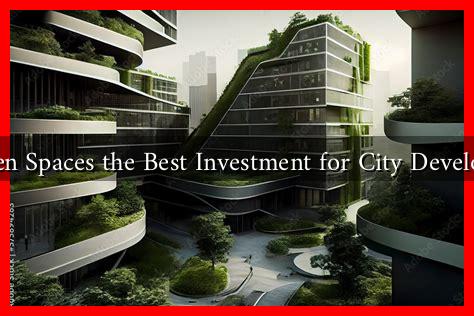-
Table of Contents
Are Open Spaces the Best Investment for City Development?
As urbanization continues to accelerate, cities around the world are grappling with the challenge of creating livable, sustainable environments. One of the most compelling solutions to this challenge is the development of open spaces. Parks, gardens, and recreational areas not only enhance the aesthetic appeal of urban areas but also provide numerous social, economic, and environmental benefits. This article explores whether open spaces are indeed the best investment for city development.
The Multifaceted Benefits of Open Spaces
Open spaces serve as vital components of urban infrastructure. Their benefits can be categorized into several key areas:
- Environmental Benefits: Open spaces contribute to biodiversity, improve air quality, and help mitigate urban heat effects. For instance, urban parks can reduce temperatures by up to 5 degrees Fahrenheit compared to surrounding areas.
- Social Benefits: Parks and recreational areas foster community interaction and social cohesion. They provide a venue for cultural events, sports, and leisure activities, enhancing the quality of life for residents.
- Economic Benefits: Open spaces can increase property values and attract businesses. A study by the National Recreation and Park Association found that homes near parks can sell for 20% more than those farther away.
- Health Benefits: Access to green spaces encourages physical activity, which can lead to improved public health outcomes. Research indicates that individuals living near parks are more likely to engage in regular exercise.
Case Studies: Successful Open Space Investments
Several cities have successfully integrated open spaces into their urban development plans, yielding impressive results:
- New York City’s High Line: This elevated linear park transformed an abandoned railway into a vibrant public space. Since its opening, property values in the surrounding neighborhoods have skyrocketed, and it has become a major tourist attraction, drawing millions of visitors each year.
- Melbourne’s Royal Park: This expansive park not only provides recreational opportunities but also serves as a crucial habitat for local wildlife. The park has been instrumental in improving the city’s air quality and reducing urban heat.
- Singapore’s Gardens by the Bay: This innovative project combines nature with technology, featuring futuristic structures and diverse plant life. It has become a symbol of Singapore’s commitment to sustainability and has significantly boosted tourism.
Challenges and Considerations
While the benefits of open spaces are clear, there are challenges that cities must navigate:
- Funding and Maintenance: Developing and maintaining open spaces requires significant investment. Cities must ensure that they allocate sufficient resources for ongoing upkeep.
- Equity in Access: Not all neighborhoods have equal access to open spaces. Urban planners must prioritize equitable distribution to ensure that all residents can benefit.
- Balancing Development and Preservation: As cities grow, the pressure to develop land can conflict with the need to preserve open spaces. Effective zoning laws and community engagement are essential to strike a balance.
The Future of Urban Development
As cities continue to evolve, the role of open spaces will become increasingly important. Urban planners and policymakers must recognize that investing in open spaces is not merely an aesthetic choice but a strategic decision that can yield long-term benefits. The integration of green infrastructure, such as green roofs and urban forests, can further enhance the advantages of open spaces.
Conclusion
In conclusion, open spaces represent one of the best investments for city development. They provide a multitude of benefits that enhance the quality of life for residents, promote economic growth, and contribute to environmental sustainability. As cities face the challenges of urbanization, prioritizing open spaces will be crucial in creating vibrant, resilient communities. By learning from successful case studies and addressing the challenges head-on, urban planners can ensure that open spaces remain a cornerstone of urban development.
For more information on the importance of open spaces in urban planning, visit the National Recreation and Park Association.


